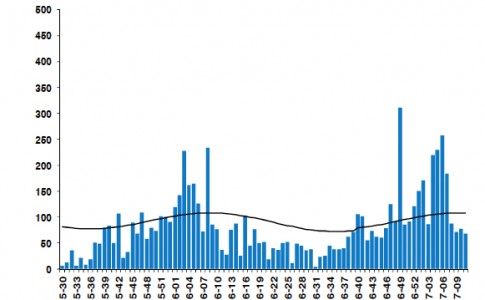We all know someone who has diabetes. November 14 marks “United Nations World Diabetes Day”, why? Diabetes is an epidemic that is spreading too quickly and in general ignorance. The watchwords: information, awareness, solidarity to have an impact, to bring together all energies to fight against this modern scourge.
A brief overview
Since the 2000s, the numbers have continued to increase. In France, in 2015, 3,7 million people were taking treatment for diabetes (i.e. 5,4% of the population, one in 20 people). This figure continues to rise among men and young people under 20.
In the world, one in 10 people aged 20 to 79 are affected, or 539 million people. 643 million (11,3%) are expected by 2030 and 783 million (12,2%) by 2045.
According to the French Federation of Diabetics (FFD): “Contrary to popular belief, diabetes is not the prerogative of developed countries. Its progress is dazzling in developing countries and particularly in Africa. Nearly 90% of people with undiagnosed diabetes live in low- and middle-income countries. »
And added: “This situation is considerably aggravated by a tragic inequality of access to treatment. The reality of diabetes is little known, underestimated (…) from North to South. Information of populations, training of caregivers and access to care are fundamental issues, too much ignored by public opinion and neglected by governments in many countries around the world. »
Diabetes, what is it ?
Diabetes is a disease that affects the way your body receives, uses and stores sugar when you eat carbohydrates (flours, breads, cereals, fast sugars). The pancreas (an organ in the belly) detects the increase in sugar—hyperglycemia—and secretes insulin. Insulin works like a key that brings sugar into the cells where it can be transformed and stored. In case of diabetes, this system no longer works, the sugar remains in the blood, we speak of permanent hyperglycemia.
How do I know if I have diabetes?
I'm going to see my doctor to do a laboratory blood sugar test. Diabetes is confirmed when fasting blood sugar is equal to or greater than 1.26 g/l on two occasions.
Type 1 or type 2 diabetes, what's the difference?
Type 1 diabetes is diagnosed in young people and occurs when our own immune system (our defense system against bacteria/viruses) produces antibodies that attack our pancreas. It affects around 6% of diabetics.
In type 2 diabetes, either the pancreas does not produce enough insulin or the body no longer knows how to use insulin, leading to an increase in blood sugar.
The causes of type 2 diabetes are a set: a history is often present in the family; an unbalanced diet (fast/junk food, fruit juice/industrial meals), lack of physical activity, overweight/obesity, etc.
Symptoms and complications
For type 1 diabetes, the symptoms are intense thirst, copious urine, and rapid weight loss. Type 2 diabetes is quieter and can go unnoticed for a long time: it is estimated that an average of 5 to 10 years elapse between the appearance of the first hyperglycemia and diagnosis. When hyperglycemia lasts, it damages large vessels such as those of the heart or the brain, leading to a risk of heart attack or stroke. High blood sugar causes the small blood vessels that carry oxygen to cells to narrow. When cells don't have enough oxygen, they become damaged and die. Complications affect several organs: the eyes with loss of vision (blindness), the kidneys (kidney failure), the extremities (amputations) and the nerves with tingling/numbness, pain or even anesthesia. Bacteria grow faster in sweeter blood, leading to a high risk of viral, urinary, wound or dental infections.
How can I avoid it, what is the treatment? “Let your food be your medicine”
A healthy lifestyle and a balanced diet are the keys to preventing diabetes. It is not a question of depriving yourself but of diversifying. Opt for meals rich in fruits, fresh vegetables and whole grains. Regular physical activity strengthens your body and in case of prediabetes, it reduces the risk of becoming diabetic within 50 years by 3%. Excessive stress and lack of sleep can increase the risk of diabetes. The goal of oral and/or injectable drug treatments is to normalize blood sugar levels. Their effectiveness is only ideal if they are combined with a balanced diet and regular physical activity.
There are no “small diabetes”. Diabetes remains a disease that is very treatable but cannot be cured.
A diabetic can be a healthy patient! Take care of yourself. _FS
1,648 total views










No comments